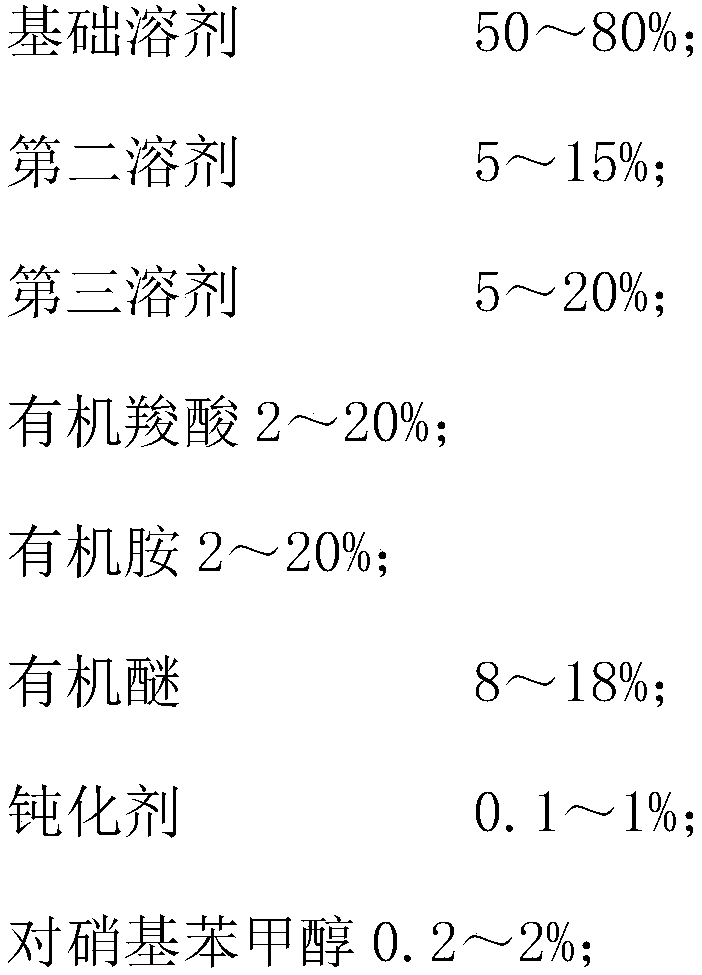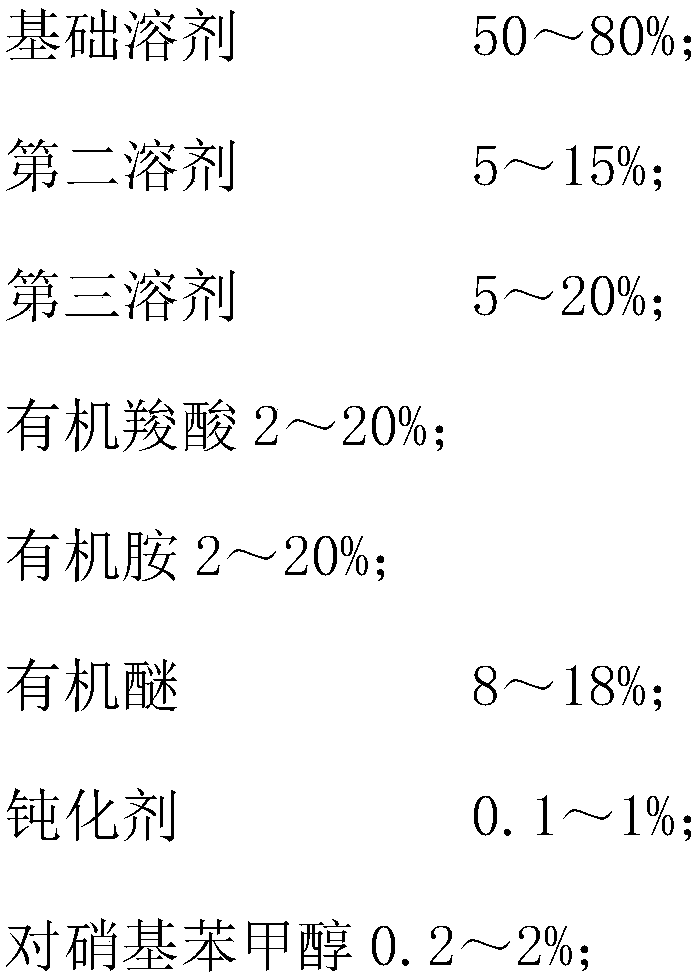Working electrolyte of aluminum electrolytic capacitor for 500-WV strobe lamp and preparation method thereof
A technology of aluminum electrolytic capacitors and preparation methods, applied in electrolytic capacitors, capacitors, circuits, etc., to achieve the effects of excellent stroboscopic characteristics, reduced ion collisions, and long life
- Summary
- Abstract
- Description
- Claims
- Application Information
AI Technical Summary
Problems solved by technology
Method used
Image
Examples
Embodiment 1
[0052] Weigh by weight: 50 parts of ethylene glycol, 5.5 parts of adipic acid, 10 parts of dimethyl sulfoxide, 14 parts of N,N-dimethylformamide, 11 parts of organic amine, 8 parts of diethylene glycol ether, 0.3 parts of ammonium hypophosphite; 1.2 parts of p-nitrobenzyl alcohol.
[0053] Preparation of boron-free high-voltage (500WV) working electrolyte with good stroboscopic characteristics from the raw materials weighed above:
[0054] Step 1: Add ethylene glycol and adipic acid into the container, stir evenly and heat to 50°C; stop heating, stir until completely dissolved;
[0055] Step 2, then use a pipetting device to slowly drop in the organic amine and accelerate stirring for 30 minutes;
[0056] Step 3, adding diethylene glycol ether, hypophosphorous acid, and p-nitrobenzyl alcohol into the container successively and stirring;
[0057] Step 4, after adding the above-mentioned component materials in sequence, keep the temperature at 135°C for 150 minutes and stir; ...
Embodiment 2
[0062] Weigh by weight: 63 parts of ethylene glycol, 3 parts of suberic acid, 6 parts of N,N-dimethylformamide, 10 parts of methyl cyanide, 6 parts of organic amine, 10 parts of polyethylene glycol ether, 0.5 parts of ammonium hypophosphite; 1.5 parts of p-nitrobenzyl alcohol.
[0063] Preparation of boron-free high-voltage (500WV) working electrolyte with good stroboscopic characteristics from the raw materials weighed above:
[0064] Step 1, add ethylene glycol and suberic acid into the container, stir evenly and heat to 50°C; stop heating, stir until completely dissolved;
[0065] Step 2, then use a pipetting device to slowly drop in the organic amine and accelerate stirring for 30 minutes;
[0066] Step 3, adding polyethylene glycol ether, hypophosphorous acid, and p-nitrobenzyl alcohol into the container successively and stirring;
[0067] Step 4, after adding the above-mentioned component materials in sequence, keep the temperature at 135°C for 150 minutes and stir;
...
Embodiment 3
[0072] Weigh by weight: 57 parts of ethylene glycol, 7 parts of hydrogen azelaic acid, 6 parts of acetone, 7 parts of 4-hydroxybutyrolactone, 6 parts of organic amine, 15 parts of polyglyceryl ether, 0.8 parts of ammonium hypophosphite Parts; 1.2 parts of p-nitrobenzyl alcohol.
[0073] Preparation of boron-free high-voltage (500WV) working electrolyte with good stroboscopic characteristics from the raw materials weighed above:
[0074] Step 1, add ethylene glycol and azelaic acid hydrogen into the container, stir evenly and heat to 50°C; stop heating, stir until completely dissolved;
[0075] Step 2, then use a pipetting device to slowly drop in the organic amine and accelerate stirring for 30 minutes;
[0076] Step 3, adding polyglyceryl ether, hypophosphorous acid, and p-nitrobenzyl alcohol into the container in sequence and stirring;
[0077] Step 4, after adding the above-mentioned component materials in sequence, keep the temperature at 135°C for 150 minutes and stir; ...
PUM
 Login to View More
Login to View More Abstract
Description
Claims
Application Information
 Login to View More
Login to View More - R&D
- Intellectual Property
- Life Sciences
- Materials
- Tech Scout
- Unparalleled Data Quality
- Higher Quality Content
- 60% Fewer Hallucinations
Browse by: Latest US Patents, China's latest patents, Technical Efficacy Thesaurus, Application Domain, Technology Topic, Popular Technical Reports.
© 2025 PatSnap. All rights reserved.Legal|Privacy policy|Modern Slavery Act Transparency Statement|Sitemap|About US| Contact US: help@patsnap.com



